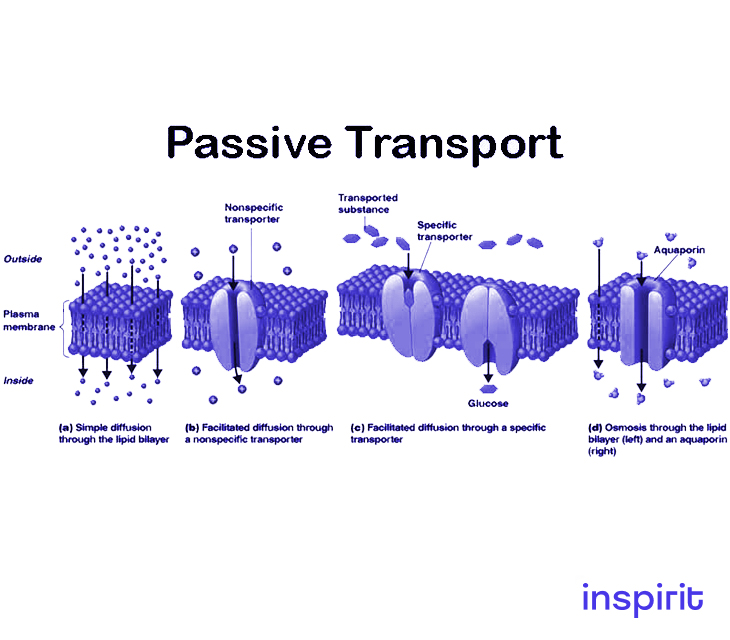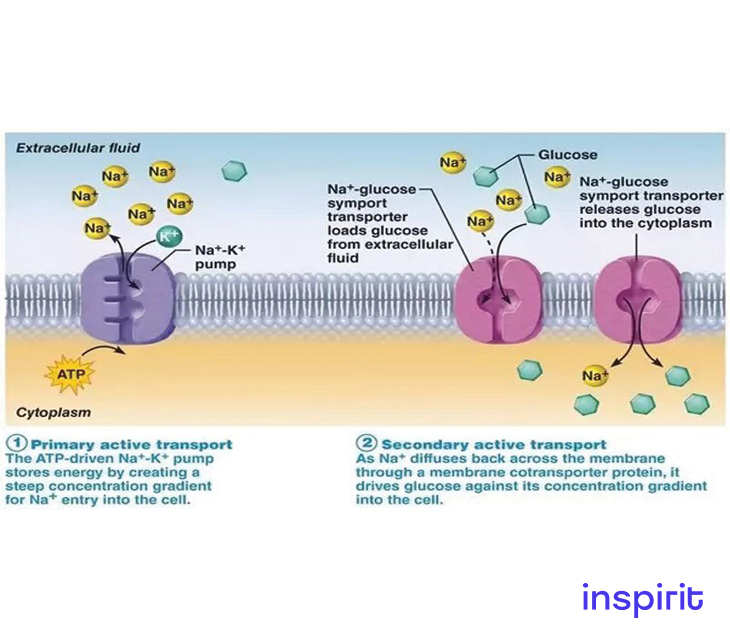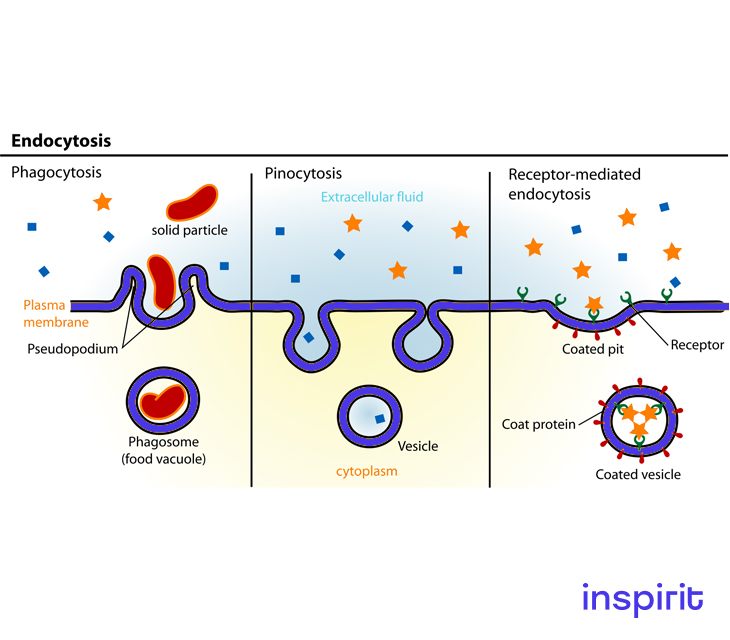Passive and Active Transport Study Guide
Introduction
Active and passive transport are two processes that help supply nutrients, water, oxygen, and other essential molecules to the body’s cells. Waste products are also eliminated with the help of passive and active transport. They have similar purposes but different movements.
Passive Transport
The selectively permeable or semipermeable phospholipid membrane, which is the most important feature of the cell, has control over the molecules of the cell. The organization and characteristics of a membrane are responsible for the permeability of the membrane.
A state of homeostasis within the cell (tissues, organs, and organ systems) is maintained with the help of the cell membrane, which makes the organism stay alive and healthy. The figure below shows that the ions leave or enter the cell as controlled by the membrane.

Transport across Membranes
Hydrophobic molecules like carbon dioxide and oxygen can easily pass through the phospholipid membrane. In contrast, the membrane does not allow the hydrophilic molecules to pass through because of their water-loving nature.
Transport proteins help the large molecules like sugar and proteins to pass through the membrane, and hence there is no contact between polar and nonpolar molecules, and the large molecules are moved through large pores.
Passive transport is one of the ways to pass molecules through phospholipids membrane with no energy input. There are three main types of passive transport-
-
Diffusion: It helps the molecules to move from the region of high concentration of molecules to the region of lower concentration. Concentration gradient is the term for the difference between the concentrations of molecules in the two areas.
-
Facilitated diffusion: It involves the diffusion of solutes through transport proteins. Even though there is an involvement of transport proteins, it is still passive transport because the movement of the solutes is down the concentration gradient.
-
Osmosis: Diffusion of water molecules through a selectively permeable membrane from higher water concentration to lower water concentration is called Osmosis.
Active Transport
Contrary to passive transport, where there is no energy requirement for the movement of molecules and ions are carried down the concentration gradient, active transport pumps molecules against the concentration gradient. Here, energy is required. Energy is used in the form of ATP to move the molecules against the concentration gradient.

Transport proteins, also known as protein pumps, transport the small molecules or small ions across a cell membrane, as shown in the figure. The larger molecules (for example-starch) can also be transported actively through the membrane with the help of vesicle transport processes called endocytosis and exocytosis.
What are Endocytosis and Exocytosis?
Endocytosis: The process of transport of particles from outside the cell to the inside of the cell is called endocytosis. The membrane of the cell folds over the particle, which makes it completely enclosed. The vesicle then pinches off and moves the particle into the cytosol. Endocytosis has two types-
-
Phagocytosis: A phagocytic vesicle is formed by the plasma membrane, which engulfs the solid material when dissolved in the cell.
-
Pinocytosis: It occurs when the plasma membrane folds inward to form a channel allowing the dissolved substances to enter the cell. The liquid is encircled with a pinocytic vesicle when the channel is enclosed.

Exocytosis: When the vesicle fuses with the plasma membrane and releases its content outside the cell, it is called exocytosis. When protein-like substances are produced by the cell for export or when the cell gets rid of a waste product, exocytosis occurs. Newly-made membrane lipids and proteins are moved on the top of the plasma membrane by exocytosis.###Difference Between Active Transport and Passive Transport
| Active Transport | Passive Transport |
|---|---|
| -Cellular energy is required. | -Does not require cellular energy. |
| -Movement takes place from a region of lower concentration to a region of higher concentration of molecules. | -Movement takes place from a region of higher concentration to a region of lower concentration of molecules. |
| -It is needed for the transportation of all molecules such as proteins, large cells, ions, etc. | -It is needed for the transportation of all soluble molecules, including oxygen, water, carbon dioxide, lipids, sex hormones, etc. |
| -It is a rapid process. | -It is a comparatively slow process. |
| -Carrier proteins are required in active transport | -Carrier proteins are not required in passive transport |
| -Metabolic inhibitors can influence and might make the transportation stop | -Transportation is not affected by metabolic inhibitors |
| -Transpires in a single direction | -Transpires in multiple directions. |
###Example of Passive Transport
Example 1 – Once ethanol enters your body, it collides with your bloodstream at a high speed. That’s why some individuals become intoxicated within a few minutes of consumption. This is because the ethanol enact simple diffusion. Its tiny molecule size allows it to pass through tissues and cells and affect your body without gathering energy.
Example 2 – The brain activities in our head depend on sodium and potassium. A resting neuron contains concentration of potassium ions on the inside and concentration of sodium ions on the outside. When neurons get active, the activated protein on the outer membrane allows sodium ions to enter inside and potassium ions to exit.
Here, both the ions move from a high concentration area to low concentration area. As they need help to do so, this is the case of facilitated diffusion.
Example 3 – Intestine reabsorbing the nutrients by separating them from the waste and transporting them through their membrane into the bloodstream is an example of Filtration.
Example 4 – When you soak a raisin in the water, the water goes inside it by the process of osmosis. The tonicity here is very good.
Conclusion
-
The two biological processes-Active and Passive transport have different types of movement.
-
Energy is required in only one of the two processes i.e active transport.
-
Both the processes transport molecules into the cell by different methods.
FAQs
1. What are the examples of active and passive transport?
Phagocytosis, pinocytosis, and sodium-potassium pump are examples of active transport while diffusion, facilitated diffusion and osmosis are examples of passive transport.
2. What is the difference between active and passive transport?
Active transport involves the movement of molecules from lower concentration to higher concentration with the use of energy. Passive transport involves the movement of molecules from higher concentration to lower concentration and no amount of energy is required.
3. What are the four types of active transport?
Active transport involves endocytosis and exocytosis. Endocytosis is further divided into phagocytosis and pinocytosis.
4. What are the three types of passive transport?
Diffusion, facilitated diffusion and osmosis are the three types of passive transport which do not require energy to move the particles.
5. Is diffusion active or passive?
Diffusion is a type of passive transport that does not require energy. Diffusion helps the molecules to move from a region of high concentration to a region of low concentration.
6. Is osmosis a type of active transport?
No, osmosis is a type of passive transport. It carries out-diffusion of water molecules through a selectively permeable membrane.
We hope you enjoyed studying this lesson and learned something cool about Active and Passive Transport! Join our Discord community to get any questions you may have answered and to engage with other students just like you! Don’t forget to download our App and check out our awesome VR room for this guide – we promise, it makes studying much more fun 😎
]]>